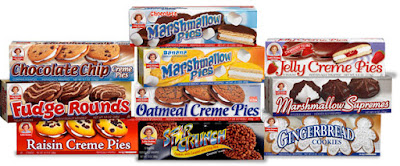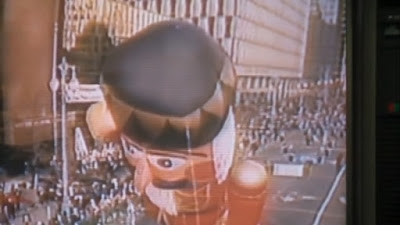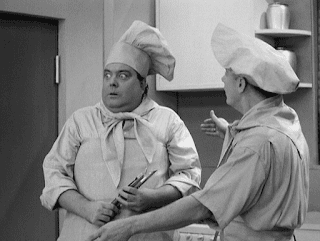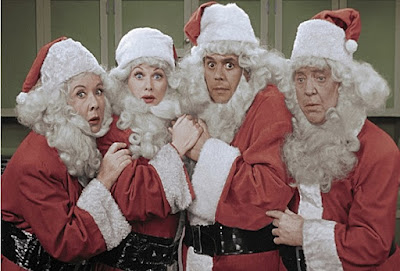I recently read that one of my favorite video games was approaching its 25th Anniversary, and I was excited to write this article. Honestly, the topic has been on a list of things I wanted to write about since 2020, but I've never gotten around to it.
When I was done reading, I noticed the date on the article was almost two years ago and realized we're closer to the 27th Anniversary than we are to the 25th. Oh well. The 27th is not exactly the most exciting anniversary, but with Wrestlemania 40 taking place this past weekend and still riding the high of spending an amazing night in Greensboro at AEW Revolution for Sting's last match, I thought now was as good a time as any!
Besides, if I wait any longer, I'll end up waiting a few more years for the 30th... assuming I don't forget to write about it then, either!
WCW/nWo World Tour was released on December 2, 1997 for Nintendo 64. Not even a year later, in October of 1998, its sequel, WCW/nWo Revenge, would leave its mark on the video game industry.
I know Revenge gets all the love, but if I had a gun to my head, I'd pick World Tour. Although, I'll never forget my Mom taking me across town to Toys R Us on Halloween morning (a Saturday that year) to pick up Revenge. We had Wendy's on the way home, which I always looked forward to, but I couldn't wait to get home and play my new video game this time.
One of the new features that year was various "sets" for the background, and with it not only being my favorite WCW Pay-Per-View but also Halloween Day, I spent so much time using Halloween Havoc as my chosen set that I almost missed going trick-or-treating with my friends! On another note, I was probably too old to go that year (I was 14), and the following year would be my last after it was made painfully obvious by several neighbors that we were too old to collect free candy.
Either way, WCW vs nWo: World Tour was my jam for 1998 until Revenge came out. Even afterward, I'd still pop in World Tour frequently to play as some of my favorite characters that were no longer available in the sequel.
Released at the peak of World Championship Wrestling's dominance over the World Wrestling Federation during the Monday Night War, THQ made its first foray into the wrestling scene with World Tour. Developed by Asmik Ace Entertainment and AKI but published by THQ, it is the second best-selling wrestling game for the N64 console, behind its "sequel," WCW/nWo: Revenge.
Many gamers and wrestling fans will remember just how easy World Tour was to play compared to earlier wrestling games, especially Acclaim's WWF War Zone. The playing style of World Tour, namely the revolutionary "grappling system," set the standard for pro wrestling games to be expanded upon for many years and even still today.
The game introduced Asmik/AKI's new grappling system, in which all moves were started by a grappling hold. Players could then "quick-tap" or "long-press" the A button to subsequently produce either a "weak" or "strong" maneuver. A similar system was used for strikes, like kicks and punches. Wrestlers can also perform their signature taunts to elevate their "Spirit" gauge (energy) to perform their special finishing maneuvers. The game also introduced a groundbreaking "secondary finishing maneuver," in which the move was different, whether executed from the front or the back of the opponent.
You could choose from a singles match, tag team, handicap, or battle royal (my favorite). World Tour also included never-before-seen match modes, such as a WCW versus nWo tournament, round-robin, and league tournaments closer to New Japan Pro Wrestling style tournaments.
Unlike what you'd find in every wrestling game afterward, there were no "create-a-wrestler" mode or ring entrances. There was also no "story" in the game, just matches. Advertisements at the time showed a "create-a-championship" feature, but this was never included in the actual game.
A few Easter eggs were included in the game, which were hard to find in a world before the dominant use of the internet. I sort of fell into it, myself. During the "league challenge" format, you'd have to defeat a host of wrestlers from the given promotion in the game. Doing so would allow you to fight for that promotion's championship against a hidden character. Defeating that wrestler would "unlock" them, allowing you to use them during regular gameplay. For WCW, you could unlock Diamond Dallas Page. Wrath would unlock if you defeated the DOA promotion, and Glacier would unlock by defeating IU. Macho Man Randy Savage was the secret, unlockable character for the nWo.
If you defeated all four promotions, a much larger tournament would unlock where you could beat one of two hidden characters, dependent upon your selected weight class. For cruiserweight, the character was Black Widow, a spoof of Japanese wrestler Manami Toyota. For heavyweight, you'd unlock Joe Bruiser, a caricature of Muhammed Ali.
One of the groundbreaking features I thought was the coolest was the use of foreign objects, or international objects, for you long-time WCW fans! You could retrieve them from leaning into the audience. You'd return with weapons such as a steel chair, baseball bat, barbed wire bat, or a broken piece of a wooden table. You could only use the weapons outside of the ring, which was lame, but it was something you couldn't do in any other game at the time, so it still was pretty cool.
The roster consisted of four promotions, each with its own list of talent. The DOA and IU characters were non-licensed, real-world international wrestling stars under fake names.
World Championship Wrestling
Lex Luger
Sting
Giant
Scott Steiner
Rick Steiner
Ric Flair
Ultimo Dragon
Dean Malenko
Eddy Guerrero
Rey Misterio Jr.
Chris Benoit
Steven Regal
Diamond Dallas Page (Unlockable Character)
new World order
"Hollywood" Hulk Hogan
nWo Sting
Buff Bagwell
Eric Bischoff
Scott Norton
Kevin Nash
Scott Hall
Syxx
"Macho Man" Randy Savage (Unlockable Character)
Dead Or Alive (DOA)
Hannibal (Hayabusa)
Sumo Jo (Genichiro Tenryu)
Kim Chee (Koji Kitao)
Blackheart (Tarzan Goto)
Puchteca (Atsushi Onita)
Saladin (Abdullah the Butcher)
Dim Sum (Jado and Gedo)
Powder Keg (Kodo Fuyuki)
Ali Baba (Tiger Jeet Singh)
Wrath (Unlockable Character)
Independent Union (IU)
Black Ninja (The Great Sasuke)
Shaolin (Jinsei "Hakushi" Shinzake)
The Unknown (Super Delfin)
The Claw (Gran Naniwa)
Black Belt (TAKA Michinoku)
Paco Loco (Dick Togo and "Terry Boy" Men's Teioh)
Shaman (Shunji Takano)
Master Fuji (Yoshiaki Fujiwara)
Glacier (Unlockable Character)
Whole World Wrestling (WWW)
Joe Bruiser (Muhammed Ali)
Black Widow (Manami Toyota)
As you can see, the roster was quite extensive and one of the things many loved about the game. There were some complaints about the gameplay, namely the timing required to find holes in the computer's defense. It also required quite a bit of "button mashing" to score the pinfall.
Nintendo Power magazine remarked, "The great thing about this game is that you can do a lot without knowing a lot, which makes it perfect for multiplayer matches where one or more players may be new to the game." They also proclaimed, "Maybe it's the license, or maybe it's the capacity to grab foreign objects from outside the ring or throw opponents from it, but this game brings out the best and worst in human competitors." Nintendo Power also thought using multiple camera angles during the execution of certain moves was "groundbreaking."
Not without complaints, IGN and Nintendo Power both found frequent glitches, causing players to pass through each other. While they thought the polygonal graphics were overall impressive, they felt the crowd graphics were "ugly."
WCW vs. nWo: World Tour quickly became one of THQ's biggest hits of all time. It won "Console Fighting Game of the Year" by the Academy of Interactive Arts and Sciences. It gained Player's Choice status with over a million copies sold and was instrumental in THQ's 59% revenue increase in the third quarter. Eventually, the game sold 1.3 million copies in the United States alone.
WCW vs. nWo: World Tour was fairly quickly replaced by a new game. The sequel, WCW/nWo Revenge, would be released on October 28, 1998, and build upon the gaming engine. It introduced ring entrances, improved graphics, selectable arenas, signature moves, actual WCW championship belts, costume modification, and several other improvements.
I think the box art for the game is much more visually appealing than Revenge, and I have one on my collectible shelf in my "nostalgia museum." The bright colors are more striking, and the larger, more prominent faces of The Giant and Hollywood Hogan will always stand out to me. Besides, 1997 was probably the peak of WCW's run during the Monday Night War, and I'll always think of 1997 WCW more fondly than 1998, despite the legendary run of "Crow" Sting against the nWo.
Once I'm done editing and uploading this article, I think I'll have to click over to my N64 emulator, run the WCW vs nWo: World Tour ROM, and relive some of my glory days from the height of the wrestling craze in the 90s.
Did you have this game? What did you think? Who was your favorite wrestler? Let me know in the comments!







.png)





Comments